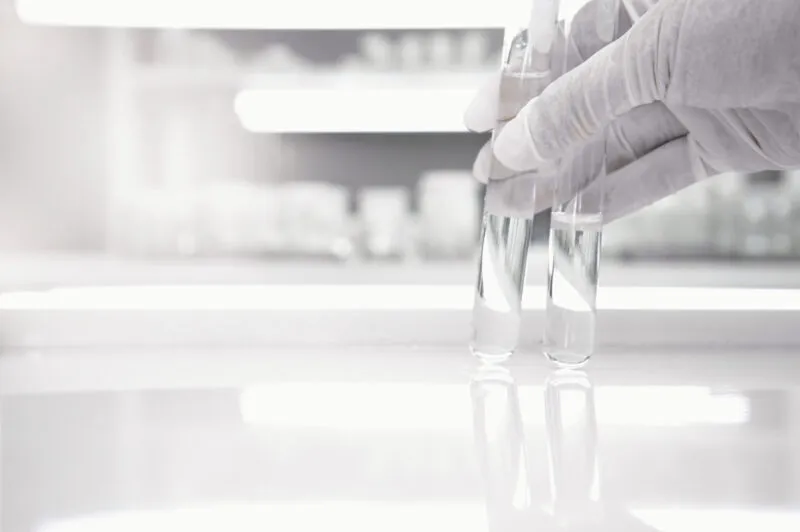All’s fair in love and tax – understanding the R&D Tax Incentive legislation changes
As a warning to you, dear reader, before you continue onwards down the page, this article contains a discussion around a topic which can only be described as stomach churning. I’m talking, of course, about ‘tax legislation’. If you truly believe your stomach sturdy enough to handle such things, and you are keen to understand the thought process behind the recent RDTI legislation changes then please read on.
What’s fair?
Fairness is a tricky, and subjective, concept. I think that fairness is most accurately described as a spectrum, something best exemplified by second-hand furniture.
I list my lovely, barely used, minimally-cat-scratched sofa for $200. From my perspective, this is completely fair – it’s ‘Fair to Me’. You, enthralled by the promise of a bargain, happen upon my shoddy, stained, and shredded sofa. ‘$200? Tell him he’s dreaming’ you think, as you proceed to offer the fair price of $100 – it’s ‘Fair to You’. After some nail-biting, back-and-forth negotiations where we both said some things we shouldn’t have, we arrive at an agreement, $150 – this is ‘True Fairness’.
All three of these prices were fair, yet True Fairness could only be achieved once both sides had their say. Now that that’s out of the way, onto the legislation!
The R&D Tax Incentive legislation
Standing alongside Catch-22, Wuthering Heights, and The Canterbury Tales, ‘TREASURY LAWS AMENDMENT (A TAX PLAN FOR THE COVID-19 ECONOMIC RECOVERY) BILL 2020’ surely ranks as one of the all-time literary greats. To avoid spoiling anything for the handful of you out there that have yet to read it, I’ll only be covering Chapter 5, Part 2 – ‘R&D clawback and catch up amounts’.
This legislation looks to introduce fairness and consistency into the calculation of feedstock adjustments (as well as government recoupments, and balancing adjustments).
So what is a feedstock adjustment?
Let’s say you’re experimenting with new cake recipes to sell in your bakery. You’ve spent money on:
- time taken to acquire the cake ingredients
- the cake ingredients themselves
- the electricity to mix them
- the gas to cook the batter.
These are your ‘Feedstock Inputs’, while the resulting cake you sell is your ‘Feedstock Output’. You’re trialling out three different recipes, all with the same ingredients, at a cost of $5 per cake (Feedstock Input).
Scenario 1: As you take the first cake out of the oven, you find it has been nothing short of a failure and not fit for consumption. Into the bin it goes. You’ve made $0 (Feedstock Output).
Scenario 2: The second cake is an improvement though it has taken the term mud cake too literally and tastes more mud than a cake from the finest bakery. You sell it to your friend for $2 (Feedstock Output).
Scenario 3: The final cake is delightful. It looks like a cake, walks like a cake, and quacks like a cake. It takes pride of place in your bakery, and you sell it to a very happy customer for $5 (Feedstock Output).
A look back at the old legislation
Previously, you’d determine which of ‘Feedstock Input’ and ‘Feedstock Output’ was lower, then divide it by three, and add that to your assessable income – this is your Feedstock Adjustment and it reduces the benefit of selling the product of your R&D. That was quite a hefty sentence, so let’s break it down by seeing it in action:
You can choose to either deduct your business expenses (a 25% deduction) or use the RDTI (a 43.5% offset). Deducting your expenses reduces your tax liability (the amount you pay) by $1.25 ($5 x 25%). The RDTI instead gives you an offset of $2.18 ($5 x 43.5%), providing a net benefit of $0.93.
Scenario 1: You have no Feedstock Output (you didn’t sell the cake), so no adjustment necessary. You have a net benefit of $0.93.
Scenario 2: Your Feedstock Output was lower than your Input (as $2 is less than $5). You add $0.67 to your assessable income (which is taxed at 25%). You have a net benefit of $0.76.
Scenario 3: Your Output and Input are the same. You add $1.67 to your assessable income. You have a net benefit of $0.51.
As you can see, the more you sell your product for, the less of a benefit you get from using the RDTI – though you receive a benefit in all cases.
What’s fair? (Reprise)
So let’s loop back around to fairness. The ATO decided that this method of feedstock calculation is ‘Fair to You’, and so it needed changing. In their eyes, if you’re not losing money when you sell the product of your R&D, then you shouldn’t get any additional benefit by using the RDTI over regular tax deductions.
That’s not to say that you can only claim the RDTI if your R&D is a failure! The RDTI is designed to be accessible to all businesses, big or small, profit or loss, successful or failed R&D. Let’s say that you’ve now sold 1 million cakes off the back of your R&D, business is booming, and it’s RDTI time – your claim (and feedstock adjustment) only applies to the products made during the R&D phase (your three trials), and not to the subsequent mountain of cake you ended up producing once you’d perfected your recipe.
But if the products you’re making as part of your R&D activities are selling for a profit, the ATO now doesn’t believe this expenditure was truly ‘at risk’ (as it’s been recouped), and so it should be taxed accordingly. Now let’s look at the ATO’s attempt to achieve ‘True Fairness’.
The changes
The new method introduced for feedstock calculations is far more complicated – if I hadn’t already lost your attention, then I certainly would by explaining it. Instead, I’ll just show you how these changes affected your bakery:
Scenario 1: Still no Feedstock Output, still no adjustment, your benefit is still $0.93.
Scenario 2: A $2 Output now increases your assessable income by $1.48, giving a net benefit of $0.56.
Scenario 3: Now you add $3.70 to your assessable income. You have a net benefit of $0.
Well that’s quite the difference. If you sell your R&D for the same (or more) than it cost to produce, the RDTI now offers no additional benefit over regular tax deductions. This new method puts into effect the idea we encountered before - if you’re not losing money when you sell the product of your R&D, then you shouldn’t get any additional benefit from the RDTI – now it’s ‘Fair to the ATO’.
What’s fair? (Reprise part 2)
So where does ‘True Fairness’ lie? It’s going to sound like I’m fence sitting, but ‘somewhere in the middle’. While the new legislation is less favourable to companies, it adds some much-needed context to feedstock calculations and is consistent with the ATO’s philosophy on R&D. I think that the changes are an improvement, but go too far in the other direction – even though you ended up selling the product of your R&D, the path you took was anything-but-straightforward, your expenditure was still at risk, and you should be rewarded accordingly.
But if you, dear reader, believe that these feedstock adjustments are confusing, unfair, or will be too much of a hassle for the benefit you’d gain, you have another option: don’t claim your feedstock inputs. You can choose to remove the feedstock inputs (materials, electricity, and so on) from your claim, and thus avoid doing a feedstock adjustment at all.
The final stretch
In summary, the changes to the legislation, in relation to feedstock, make it less beneficial than before (but still beneficial!) to claim the RDTI when you’re selling the product of your R&D. In addition, the calculation method used to work out any adjustments is far more complex than in previous years.
In light of this added complexity, and to ensure that you’re keeping on top of the legislation changes without having to actually read the legislation yourself, consider speaking with our R&D tax consulting team to aid you with your RDTI claims. We’re also available for cake tasting!


